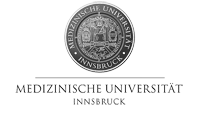|
|
 |
The aim of the study: We analysed the cardiovascular parameters during bicycle ergometry in oncological patients after complete anthracycline therapy and in healthy controls.
Methods: We studied 19
patients (group AT, 16.2±2.2 years) treated with anthracyclines for a
malignant disease (acute lymphoblastic leukaemia, 8.3±3.2 years after the
end of treatment) and 19 healthy children and adolescents (Co) chosen from
60 healthy volunteers age-matched 1:1.
The test was carried out on the ergometer using continuous exercise test
with an increment of 25 Watts/2 min until the exhaustion of subjects. We
analysed the baseline values of blood pressure, the ejection fraction and
heart rate and the same values immediately at the end of the test together
with maximal consumption of oxygen (pVO2 expressed in ml/min and in
ml/min/kg) and the maximal tolerated load (expressed in W and W/kg). The
baroreflex sensitivity (BRS; ms/mmHg and BRSf; mHz/mmHg) was determined by
spectral method using 5-minute registration of blood pressure by Finapres (Ohmeda,
USA).
Results: There were no differences between group AT and Co either in baseline parameters or in mean values in studied parameters during exercise testing. The distribution histograms of maximal tolerated load (the lowest values – AT: 64 W; Co: 104 W) and maximal tolerated load per kg of body weight (the lowest values – AT: 1.6 W/kg; Co: 2.0 W/kg) differed significantly, (p<0.05, F-test).
Conclusion: In spite of significant difference in distribution of tolerated load during exercise between treated patients and controls, the differences in mean values of all parameters were insignificant. This indicates that in majority of subjects after anthracycline treatment the load tolerance is not affected.
Supported by grant: VVZ MSMT No. 0021622402.
